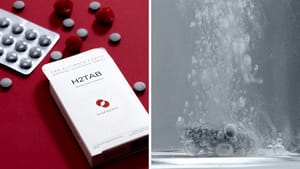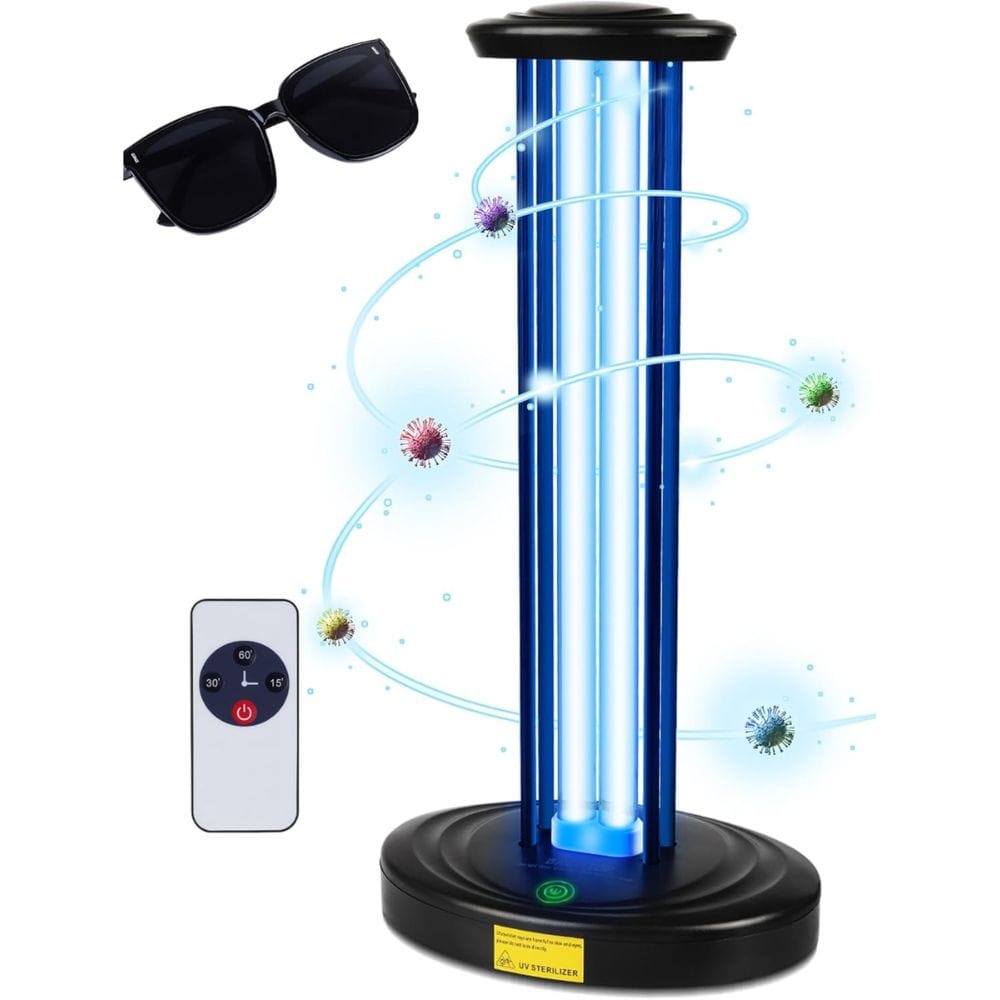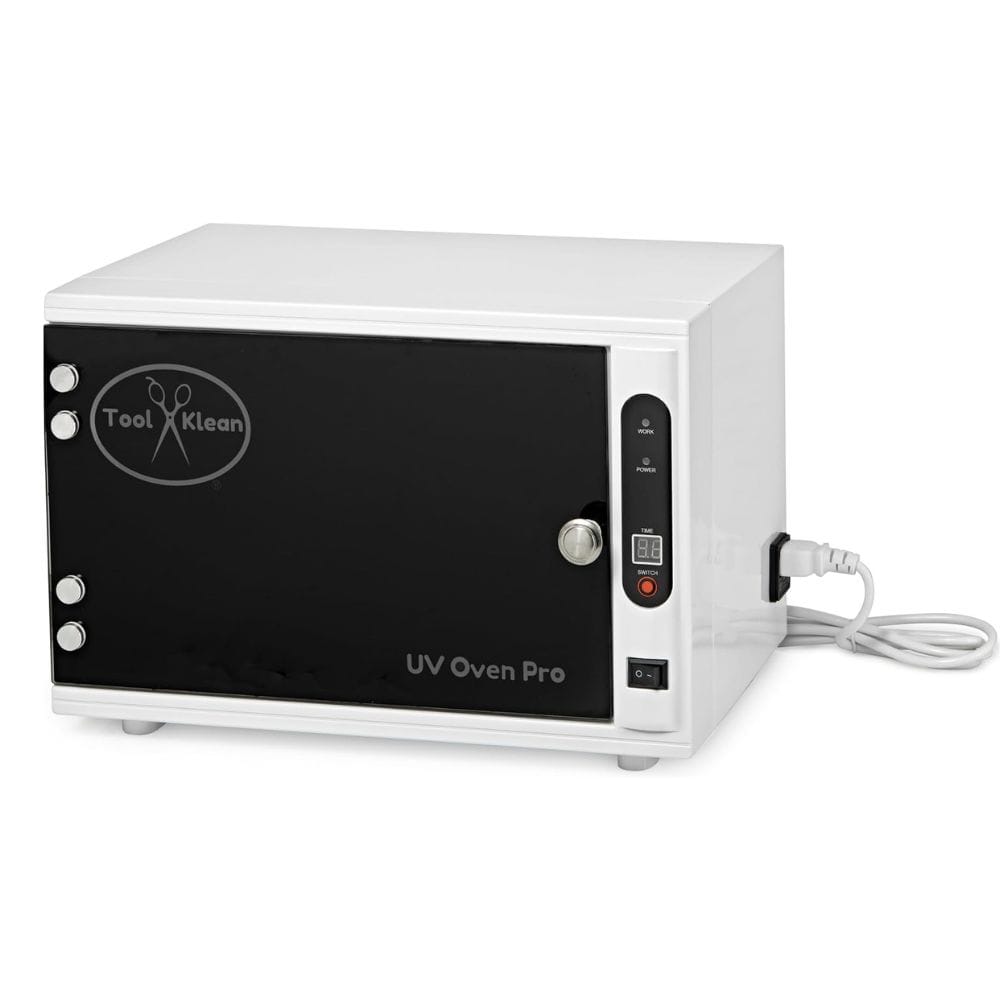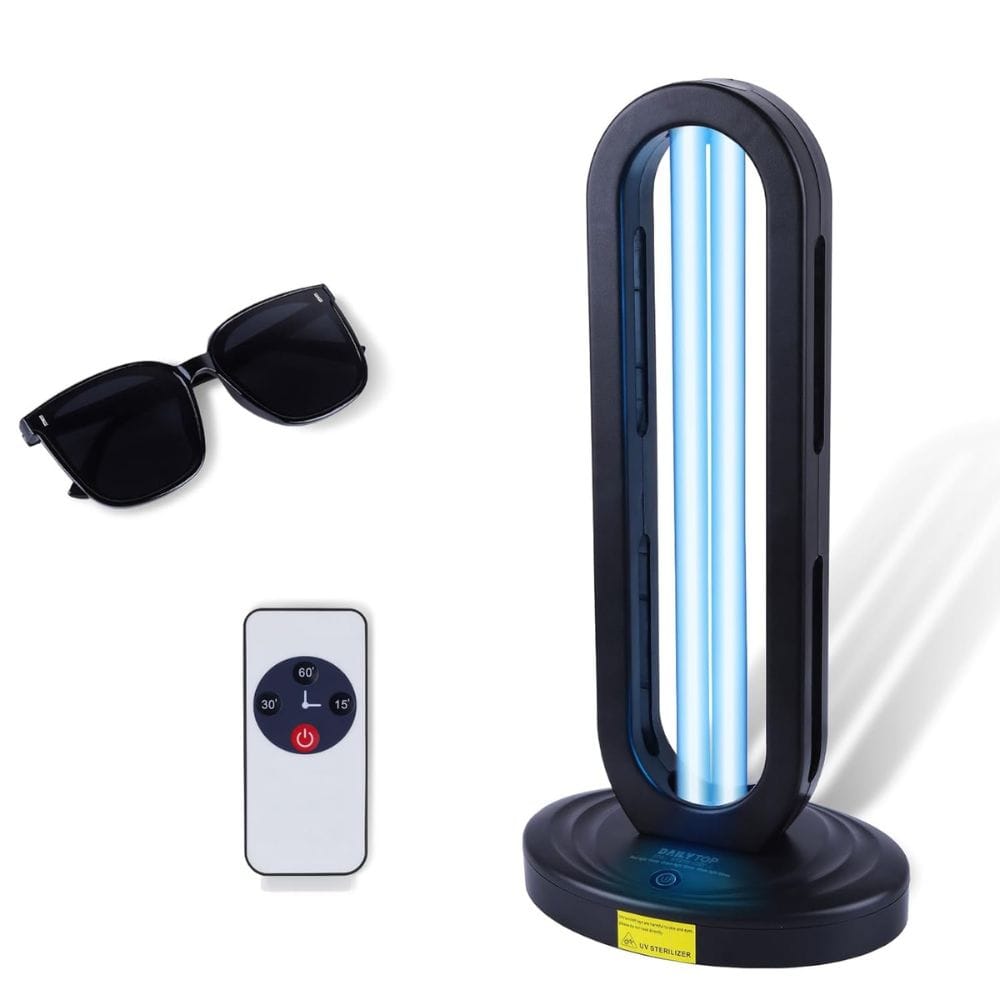Key Takeaways:
- UV light sanitizers use UVC rays to kill germs and disinfect surfaces effectively.
- Safety instructions are crucial to avoid health risks such as eye injury and severe burns.
- Modern designs and advanced technology make UV light sanitizers an environmentally friendly option for disinfection.
Introduction to UV Light Sanitizers
Ultraviolet (UV) light sanitizers have become increasingly popular as a method to kill germs and disinfect surfaces. These devices use UVC light, a type of ultraviolet light, to eliminate harmful pathogens such as bacteria and viruses. The technology behind UV light sanitizers is not new, but recent advancements have made these devices more accessible and effective for everyday use.
UV light sanitizers come in various forms, including UV lamps, wands, and boxes. Each type has its own set of features and benefits, making it essential to understand the differences before making a purchase. This review will delve into the effectiveness, safety, and practicality of UV light sanitizers, providing you with the information needed to make an informed decision.
How We Choose
Our team has spent hours researching through thousands of user reviews and star ratings for the best products on the market. We take into account factors such as quality, performance, sustainability, and affordability when recommending products to our readers. We strive to find the best options that meet everyone’s needs - even those on a budget!
We hope you find your next special item below! This product was independently selected by our editors. Good Guru Reviews may collect a share of sales or other compensation from the links on this page if you decide to buy something (at no additional cost to you, that's how we stay in business). Enjoy finding your next special item with us!
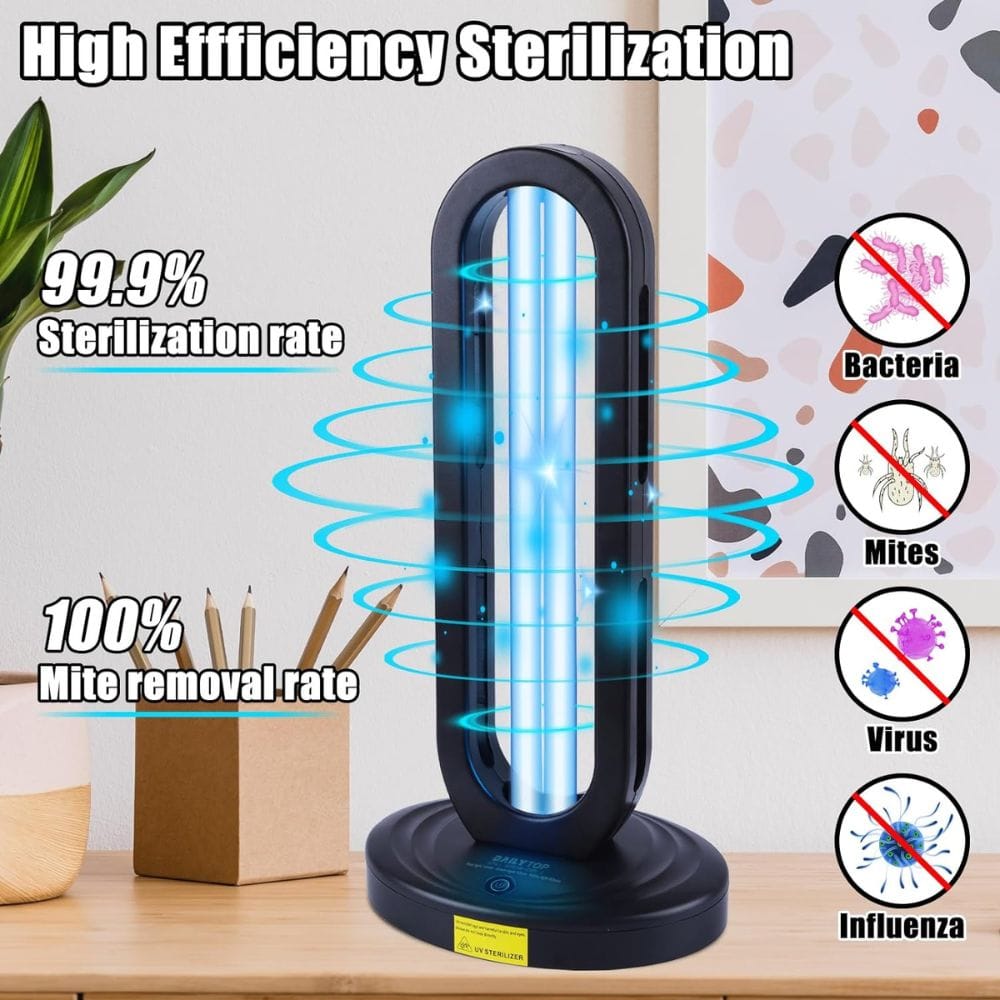
How UV Light Sanitizers Work
UV light sanitizers operate by emitting UVC rays, which have a wavelength between 200 and 280 nanometers. These rays are highly effective at killing germs because they can deeply penetrate the cell walls of single-celled organisms, disrupting their DNA and rendering them inactive. This process is known as germicidal irradiation.
The effectiveness of UV light sanitizers depends on several factors, including the intensity of the UVC light, the duration of exposure, and the distance between the light source and the surface being disinfected. For optimal results, it is crucial to follow the manufacturer's instructions and ensure that the device is used correctly.
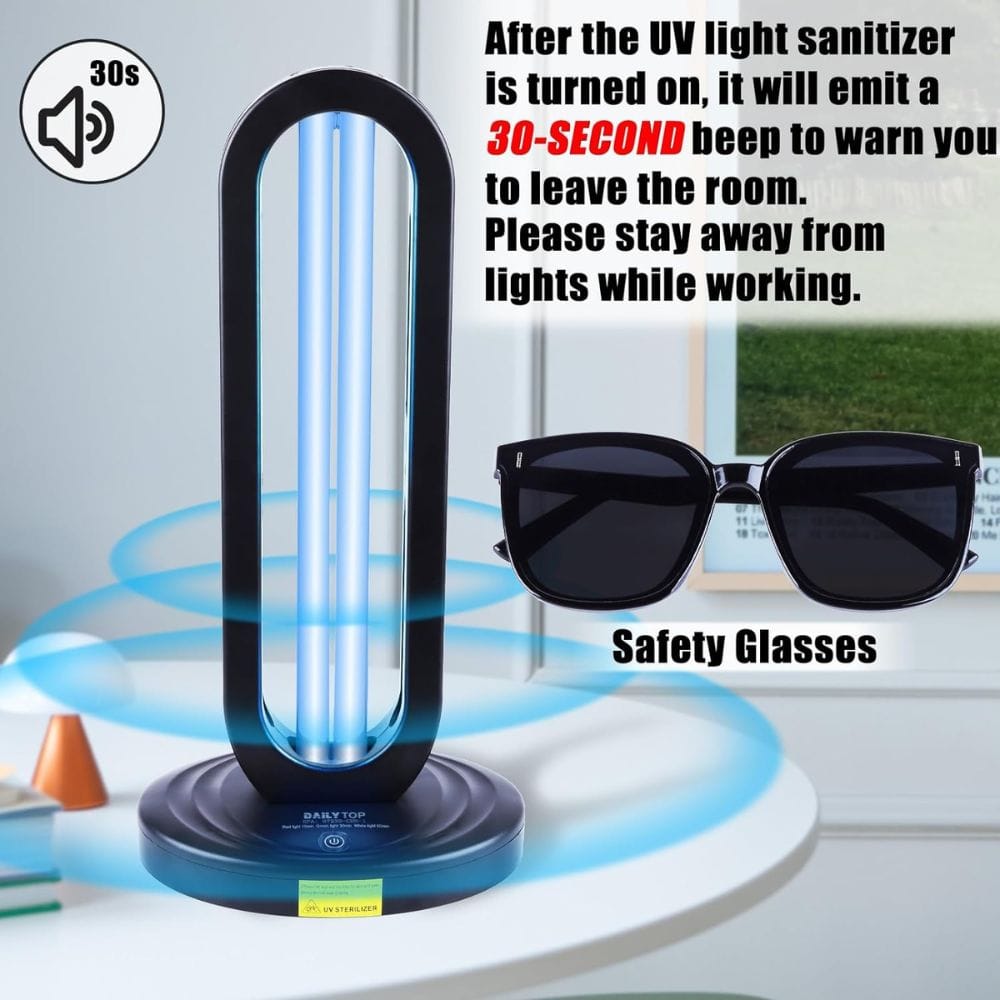
Types of UV Light Sanitizers
UV Lamps
UV lamps are stationary devices that emit UVC light to disinfect a specific area. These lamps are often used in healthcare settings, laboratories, and other environments where maintaining a high level of cleanliness is critical. UV lamps are effective at killing germs on surfaces, in the air, and even in water.
UV Wands
UV wands are portable devices that allow users to disinfect surfaces by waving the wand over the area. While convenient, UV wands can be less effective than stationary lamps because the user must ensure that the wand is held at the correct distance and angle for the appropriate amount of time. Additionally, there are concerns about unsafe UV wands that do not meet safety standards.
UV Boxes
UV boxes are enclosed devices designed to disinfect small items such as phones, keys, and other personal belongings. These boxes are highly effective because they ensure that the items are exposed to UVC light from all angles, providing thorough disinfection.
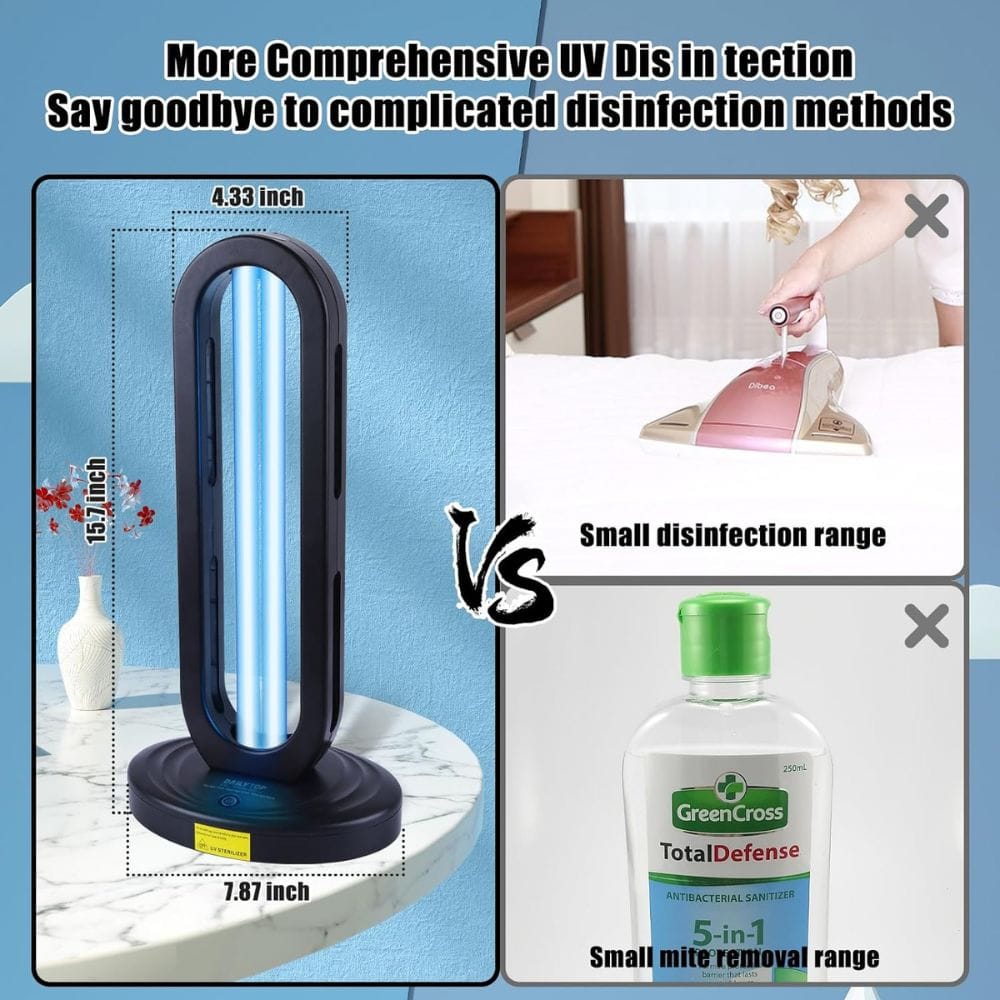
Effectiveness of UV Light Sanitizers
The ability of UV sanitizers to kill germs is well-documented. Studies have shown that UVC light can effectively eliminate a wide range of harmful pathogens, including bacteria, viruses, and fungi. However, the effectiveness of these devices can vary based on several factors.
One critical factor is the intensity of the UVC light. Higher-intensity lights are generally more effective at killing germs, but they also pose a greater risk of causing harm to humans. Another important factor is the duration of exposure. Longer exposure times increase the likelihood of killing germs, but they also increase the risk of health issues such as severe burns and eye injury.
Safety Instructions and Health Risks
While UV light sanitizers are effective at killing germs, they also pose significant health risks if not used properly. UVC rays can cause severe burns, eye injury, and other health issues if humans are exposed to them. It is essential to follow safety instructions provided by the manufacturer to minimize these risks.
Some key safety tips include wearing protective eyewear, avoiding direct skin exposure, and keeping the device out of reach of children. Additionally, it is crucial to ensure that the device is turned off when not in use to prevent accidental exposure.
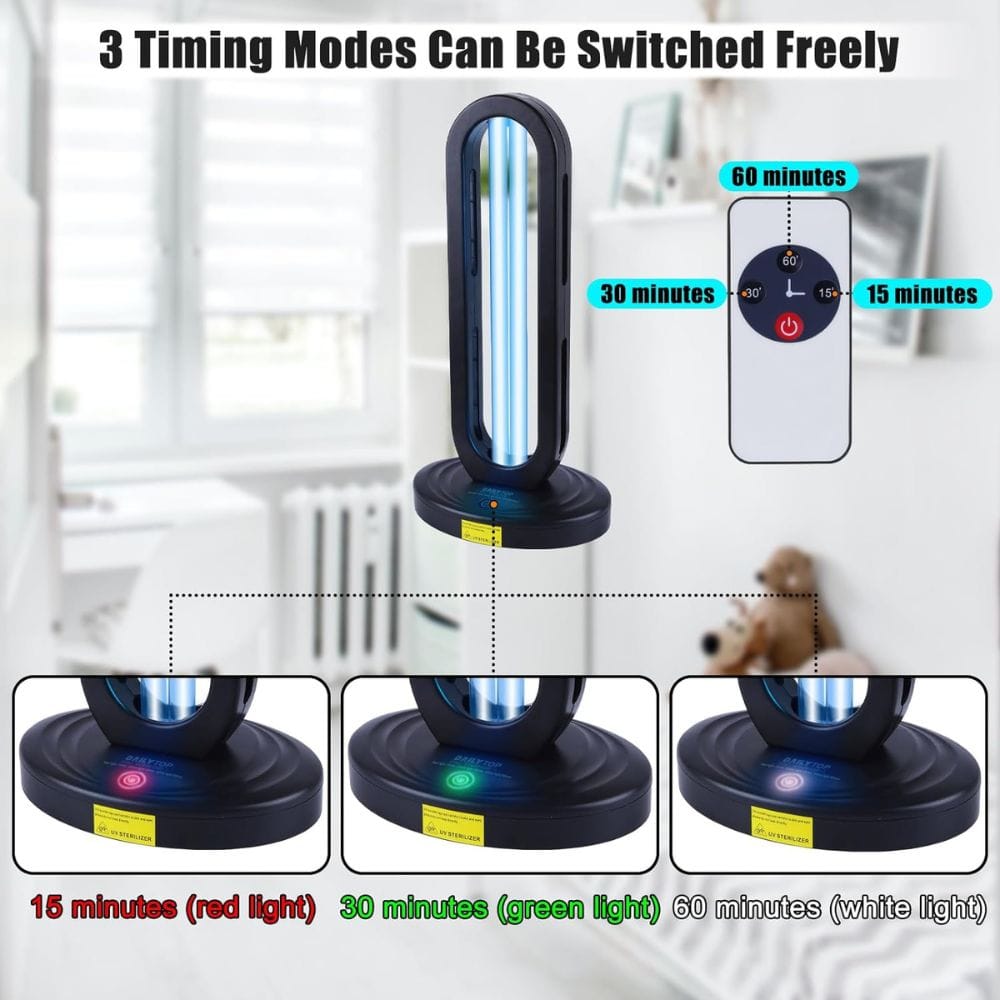
Modern Design and Technology
Modern UV light sanitizers are designed with user convenience and safety in mind. Many devices feature automatic shut-off mechanisms, timers, and sensors that detect human presence to prevent accidental exposure. These advancements make UV light germicidal ray sanitizers more user-friendly and safer to use.
The design of UV light sanitizers has also evolved to be more aesthetically pleasing. Sleek, modern designs make these devices suitable for use in homes, offices, and other settings where appearance matters. Additionally, many manufacturers offer a warranty on their products, providing peace of mind to consumers.
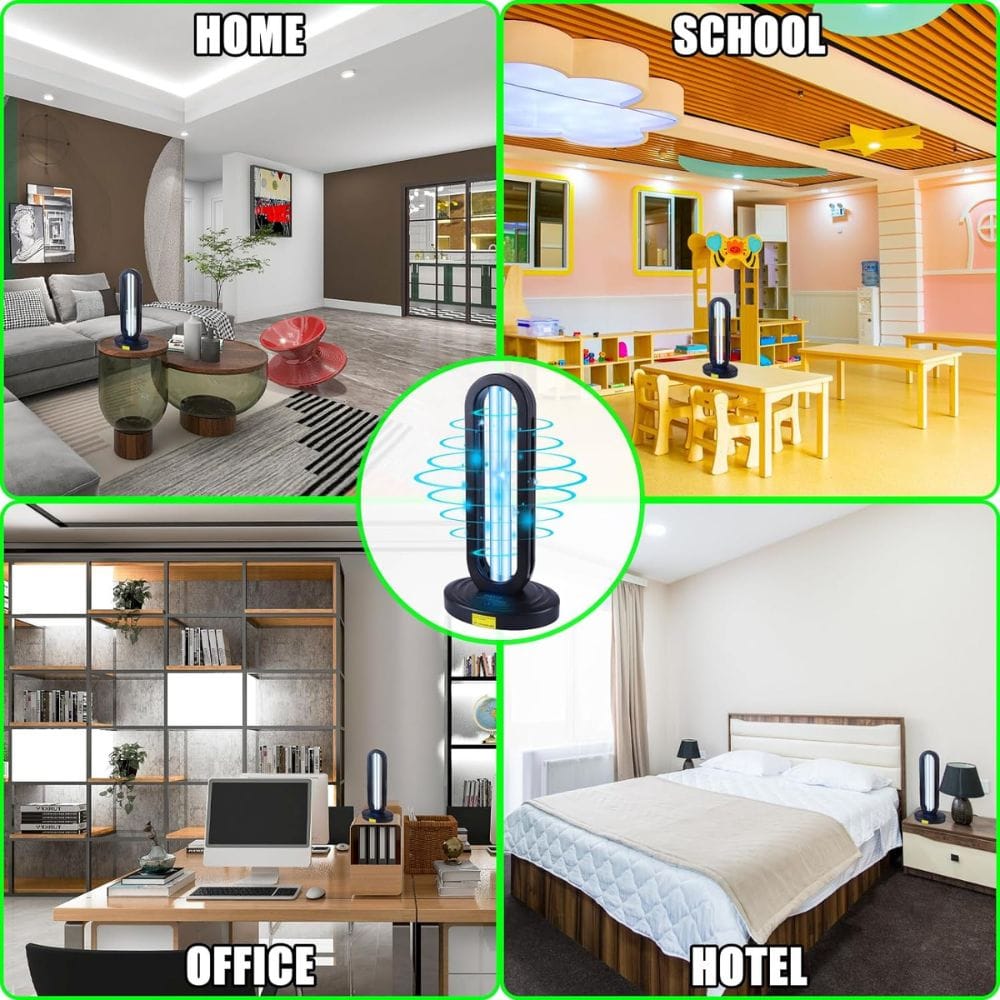
Environmental Impact
UV light sanitizers are an environmentally friendly alternative to chemical disinfectants. Unlike chemicals, UVC light does not leave behind harmful residues or contribute to pollution. This makes UV light sanitizers a sustainable option for disinfection.
However, it is essential to consider the environmental impact of the devices themselves. UV lamps and bulbs contain materials that can be harmful if not disposed of properly. It is crucial to follow proper disposal guidelines to minimize the environmental impact.
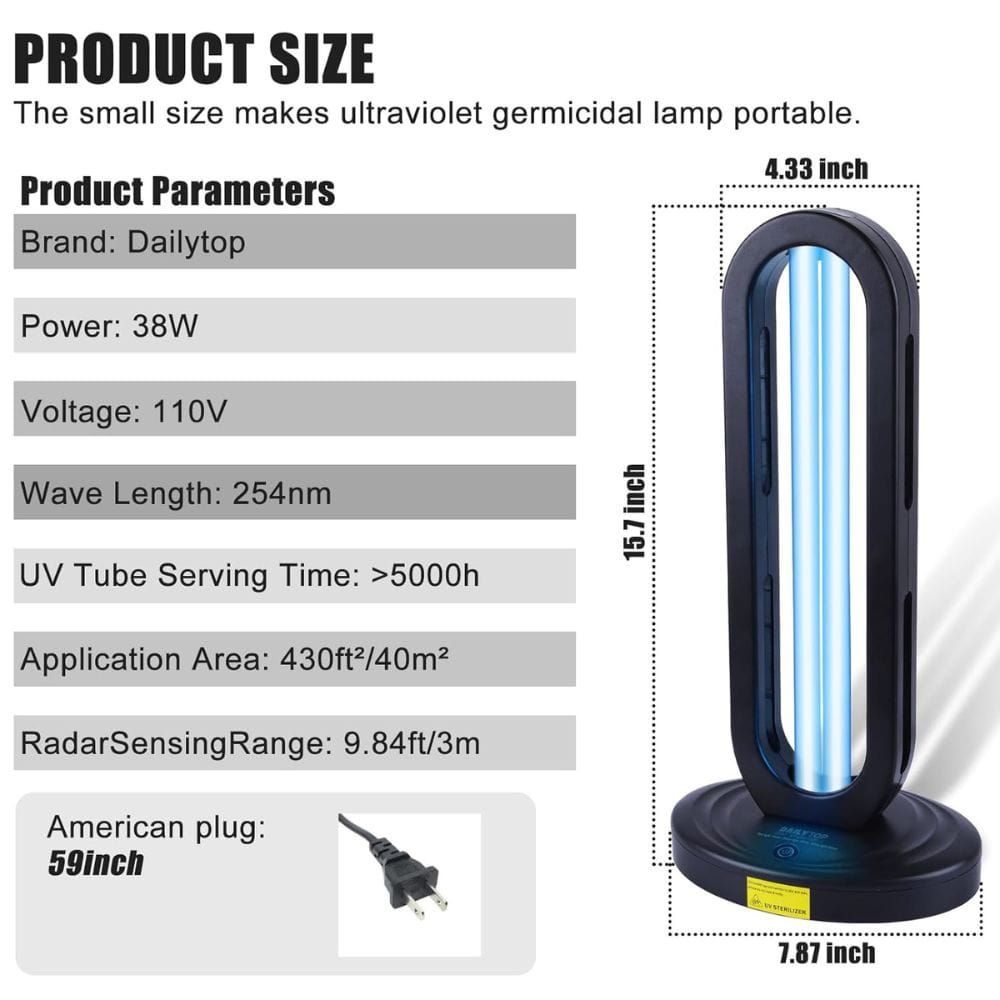
Practical Applications of UV Light Sanitizers
Healthcare Settings
In healthcare settings, maintaining a high level of cleanliness is critical to prevent the spread of infections. UV light sanitizers are widely used in hospitals, clinics, and laboratories to disinfect surfaces, air, and medical equipment. These devices help reduce the risk of healthcare-associated infections and improve patient safety.
Home Use
UV light sanitizers are also becoming popular for home use. These devices can be used to disinfect surfaces, personal items, and even food. For example, UV boxes are ideal for disinfecting phones, keys, and other small items that are frequently touched. UV wands can be used to disinfect countertops, doorknobs, and other high-touch surfaces.
Commercial Settings
In commercial settings, such as offices, restaurants, and retail stores, maintaining a clean environment is essential for the health and safety of employees and customers. UV light sanitizers can be used to disinfect surfaces, air, and objects, helping to reduce the spread of germs and create a safer environment.
Case Study: UV Light Sanitizers in Hospitals
A study conducted in a hospital setting found that using UV light sanitizers significantly reduced the presence of harmful pathogens on surfaces. The study involved placing UV lamps in patient rooms and common areas and measuring the levels of bacteria and viruses before and after using the devices.
The results showed a substantial decrease in the number of harmful pathogens, demonstrating the effectiveness of UV light sanitizers in a healthcare setting. The study also highlighted the importance of following safety instructions to prevent health risks associated with UVC exposure.
Case Study: UV Light Sanitizers in Restaurants
Another case study focused on the use of UV light sanitizers in a restaurant setting. The study aimed to determine the effectiveness of UV wands in disinfecting high-touch surfaces such as tables, chairs, and menus.
The results showed that UV wands were effective at reducing the presence of bacteria and viruses on these surfaces. However, the study also noted that the effectiveness of the wands depended on proper usage, including holding the wand at the correct distance and angle for the recommended amount of time.
Comparing UV Light Sanitizers to Chemical Disinfectants
Effectiveness
Both UV light sanitizers and chemical disinfectants are effective at killing germs. However, UV light sanitizers have the advantage of being able to disinfect surfaces without leaving behind harmful residues. Chemical disinfectants, on the other hand, can be more effective at killing certain types of pathogens, but they also pose health risks if not used properly.
Safety
UV light sanitizers pose significant health risks if not used correctly, including severe burns and eye injury. Chemical disinfectants also pose health risks, such as skin irritation and respiratory issues. It is essential to follow safety instructions for both types of disinfectants to minimize these risks.
Environmental Impact
UV light sanitizers are more environmentally friendly than chemical disinfectants because they do not leave behind harmful residues. However, the disposal of UV lamps and bulbs must be done properly to minimize environmental impact. Chemical disinfectants can contribute to pollution and pose risks to wildlife if not disposed of correctly.
Choosing the Right UV Light Sanitizer
When selecting a UV sanitizer, it is essential to consider several factors, including the type of device, its effectiveness, and safety features. UV lamps are ideal for stationary disinfection, while UV wands offer portability and convenience. UV boxes are perfect for disinfecting small items.
It is also crucial to consider the intensity of the UVC light and the duration of exposure required for effective disinfection. Higher-intensity lights are generally more effective but also pose greater health risks. Look for devices with safety features such as automatic shut-off mechanisms and sensors to minimize these risks.
Conclusion
UV light sanitizers are a powerful tool for killing germs and disinfecting surfaces. These devices use UVC light to eliminate harmful pathogens, making them an effective alternative to chemical disinfectants. However, it is essential to follow safety instructions to avoid health risks such as severe burns and eye injury.
Modern UV light sanitizers are designed with user convenience and safety in mind, featuring advanced technology and sleek designs. These devices are suitable for use in healthcare settings, homes, and commercial environments, providing a versatile and environmentally friendly option for disinfection.
Summary
UV light sanitizers use UVC rays to kill germs and disinfect surfaces effectively. These devices come in various forms, including UV lamps, wands, and boxes, each with its own set of features and benefits. While UV light sanitizers are highly effective, it is crucial to follow safety instructions to avoid health risks such as severe burns and eye injury. Modern designs and advanced technology make UV light sanitizers an environmentally friendly option for disinfection in healthcare settings, homes, and commercial environments.
FAQ
What are the health risks associated with UV light sanitizers?
UV light sanitizers pose significant health risks if not used properly. UVC rays can cause severe burns, eye injury, and other health issues if humans are exposed to them. It is essential to follow safety instructions provided by the manufacturer to minimize these risks, including wearing protective eyewear and avoiding direct skin exposure.
How effective are UV light sanitizers at killing germs?
UV light sanitizers are highly effective at killing a wide range of harmful pathogens, including bacteria, viruses, and fungi. The effectiveness of these devices depends on several factors, including the intensity of the UVC light, the duration of exposure, and the distance between the light source and the surface being disinfected.
Are UV light sanitizers environmentally friendly?
UV light sanitizers are an environmentally friendly alternative to chemical disinfectants because they do not leave behind harmful residues. However, it is essential to consider the environmental impact of the devices themselves. UV lamps and bulbs contain materials that can be harmful if not disposed of properly. It is crucial to follow proper disposal guidelines to minimize the environmental impact.



